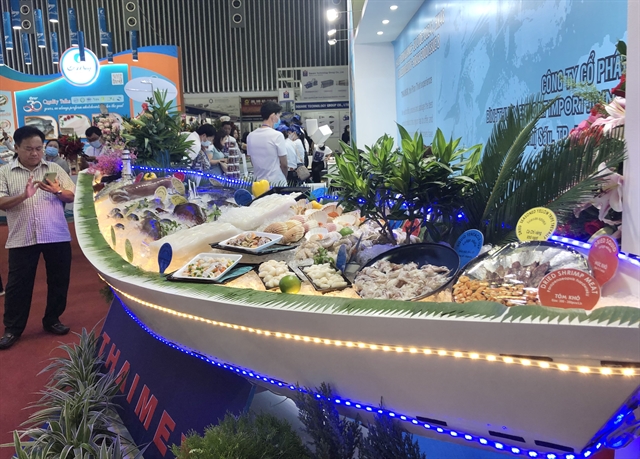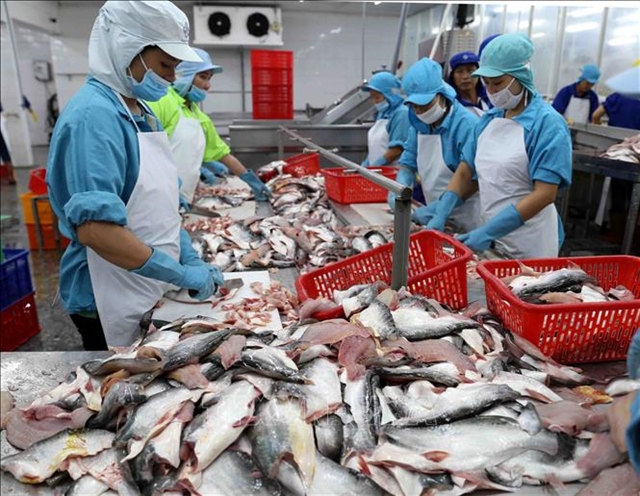 Economy
Economy

 |
| Tra fish processing for export. Việt Nam jumped one place to become the fifth largest exporter of aquatic products to Singapore for the first time in the first quarter. — VNA/VNS Photo |
HÀ NỘI — Việt Nam jumped one place to become the fifth largest exporter of aquatic products to Singapore for the first time in the first quarter of this year, according to its Trade Office in the city state.
Việt Nam’s aquatic exports to Singapore reached over S$24 million (US$17.64 million) during January - March, gaining a market share of 8.58 per cent.
Statistics from the Singaporean corporate regulatory authority showed that during the time under review, the country imported nearly S$340 million worth of aquatic products from nearly 100 countries and territories, a decrease of 5.67 per cent from the same period in 2023. It mainly imported shrimp, crab, crustacean, fresh fish, chilled fish, fish fillet, frozen fish and mollusk.
The top exporters of aquatic products to Singapore during the period were Malaysia with a 13.6 per cent market share, Norway 11.45 per cent, Indonesia 11.13 per cent, China 10.15 per cent, Việt Nam 8.58 per cent and Japan 8.34 per cent.
Counsellor Cao Xuân Thắng, head of the Việt Nam Trade Office in Singapore, said Singapore has continuously expanded and diversified supply sources to ensure food security, but this has also boosted competition among seafood exporters to the country.
Moreover, rising inflation is also a big challenge for the fisheries industry of the countries exporting to Singapore, including Việt Nam, Thắng noted, adding that any that can capitalise on logistics advantages and minimise costs will gain a greater competitive edge in exporting to Singapore.
He said that to maintain, raise its ranking as well as market share and increase the export value in this market, Việt Nam needs to further improve product quality.
Businesses also need to study and make use of the free trade agreements Việt Nam has joined while regularly updating themselves on local regulations, especially those on quality standards and labelling. They are advised to participate in trade fairs, promote their brands and products, increase the presence of Vietnamese goods in international markets, improve their competitiveness, and ensure quality consistency.
In addition, they are suggested to be careful in verifying information about partners and delivering goods and making payments to avoid risks in business transactions, according to Thắng. — VNS




